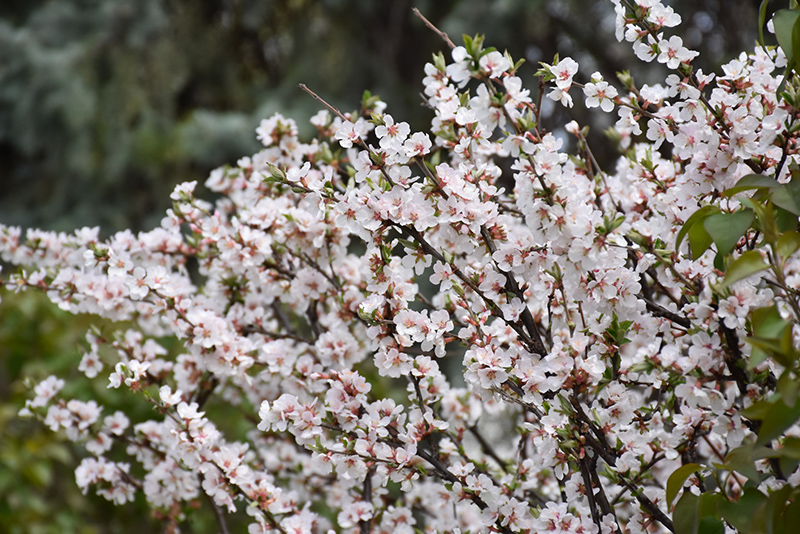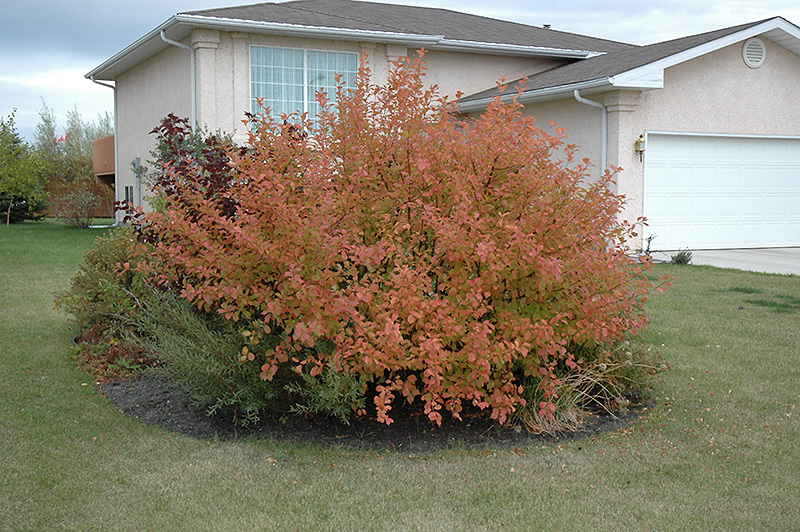Height: 8 feet
Spread: 10 feet
Sunlight:
![]()
Hardiness Zone: 2a
Description:
This versatile tall and wide-spreading shrub is covered in showy light pink flowers in early spring before the leaves, followed by irresistibly sweet bright red cherries, also interesting peeling reddish-brown bark; great as an accent or edible hedge
Edible Qualities
Nanking Cherry is a medium-sized shrub that is typically grown for its edible qualities, although it does have ornamental merits as well. It produces small cherry red round fruit (technically 'drupes') with red flesh which are usually ready for picking from early to mid summer. Note that the fruits have hard inedible pits inside which must be removed before eating or processing. The fruits have a sweet taste and a juicy texture.
The fruit are most often used in the following ways:
- Fresh Eating
- Baking
- Preserves
- Wine-Making
Features & Attributes
Nanking Cherry is covered in stunning fragrant shell pink flowers along the branches in early spring, which emerge from distinctive pink flower buds before the leaves. It has forest green deciduous foliage. The fuzzy pointy leaves turn yellow in fall. The fruits are showy cherry red drupes carried in abundance from early to mid summer.
This is a multi-stemmed deciduous shrub with a more or less rounded form. Its average texture blends into the landscape, but can be balanced by one or two finer or coarser trees or shrubs for an effective composition. This is a relatively low maintenance plant, and should only be pruned after flowering to avoid removing any of the current season's flowers. It is a good choice for attracting birds to your yard. It has no significant negative characteristics.
Aside from its primary use as an edible, Nanking Cherry is sutiable for the following landscape applications;
- Mass Planting
- Hedges/Screening
- General Garden Use
- Orchard/Edible Landscaping
Planting & Growing
Nanking Cherry will grow to be about 8 feet tall at maturity, with a spread of 10 feet. It tends to fill out right to the ground and therefore doesn't necessarily require facer plants in front, and is suitable for planting under power lines. It grows at a medium rate, and under ideal conditions can be expected to live for approximately 30 years. This variety requires a different selection of the same species growing nearby in order to set fruit.
This shrub is quite ornamental as well as edible, and is as much at home in a landscape or flower garden as it is in a designated edibles garden. It should only be grown in full sunlight. It does best in average to evenly moist conditions, but will not tolerate standing water. It is not particular as to soil type or pH. It is highly tolerant of urban pollution and will even thrive in inner city environments. This species is not originally from North America.



